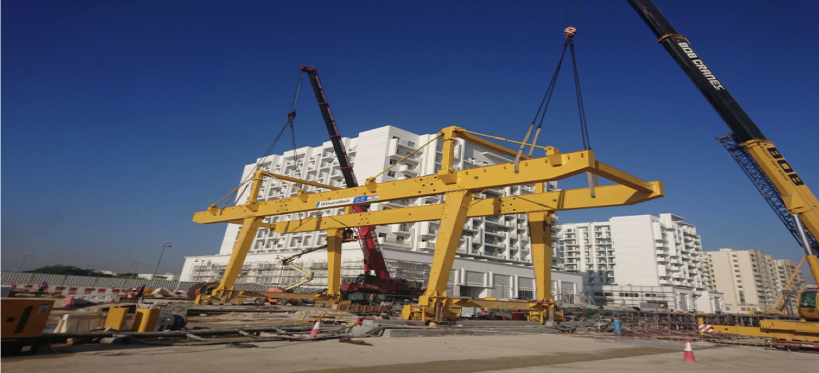call Us
+91 95103 25696
E-mail us
vinod.s@teknikengineers.in

Industrial Crane
Our company is known for its business and provides a wide range of commercial cranes, Eot and Thermal Cranes, Fabrication and Assembly services, etc. These are from real vendors in the market, so make sure they meet international quality standards. Our products are rigorously tested by our experts to ensure they are defect free. Our customers appreciate our products for their distinctive features such as reliability, durability, and corrosion resistance.
Cranes are machines used to lift and move heavy objects in manufacturing, construction, and other industries. These machines usually have a long horizontal beam, called a boom, supported by a vertical mast or tower. The boom is attached to the lift and can move horizontally and rotate.
There are cranes that come in different types and sizes, including overhead cranes, gantry cranes, jib cranes, and mobile cranes. Overhead cranes are often used in factories and warehouses to lift and move heavy objects in buildings. Gantry cranes are similar to overhead cranes but are mounted on wheels or screws that allow them to move along the road. Jib cranes are small, more maneuverable cranes that are often used in workshops and other small manufacturing facilities. Mobile cranes are mounted on wheels or pallets and are used to lift and move heavy objects on construction sites and other open areas.
Commercial cranes are often operated by trained personnel who use controls to move the boom and lift the load. Safety is an important issue when operating a crane, and workers must follow strict procedures to ensure that crane use is safe and efficient.
Commercial crane design and installation includes the process of designing, building and installing cranes for a variety of industrial applications. Here are the main points of the process:
- Design: The process starts with the design of the crane. Engineers will create a detailed plan that includes the load capacity, lifting height, and specifications of the crane.
- Material selection: The type of material used for crane fabrication depends on the requirements of the project, such as the weight of the loads being lifted and the operating environment. Common materials include steel, aluminum, and composite materials.
- Fabrication: The fabrication process involves cutting, bending, and welding the metal components to the required size and shape. The individual parts of the crane are fabricated separately.
- Surface preparation: Once the individual components are fabricated, they are prepared for final assembly. This involves cleaning and preparing the surface of the metal to ensure it is free of impurities and contaminants.
- Assembly: The individual components of the crane are then assembled into the final crane. This involves bolting or welding the components together to create the larger crane structure.
- Erection: The final step is to erect the crane. This involves installing the crane on a foundation or platform, connecting the electrical components, and testing the crane's functionality.
Get in touch
You will find yourself working in a truly collaborative environment, resulting in an incredible experience and the best end product.
